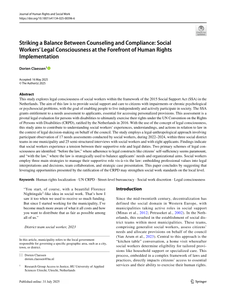Research question: The current study investigates the income elasticities and socio-economic determinants of direct and indirect sports expenditure categories by means of a log normal hurdle regression. Research methods: The data stem from a representative sample of 3005 Flemish families with school-aged children, gathered through a sports-specific survey. A log normal hurdle regression was used to calculate the determining factors and expenditure elasticities of expenditure on sports participation. Results and findings: The results indicate that income, education and the age of the youngest child are positively related to almost all sports expenditure categories, while the number of family members and degree of urbanisation are significant for only a number of the expenditure categories. The elasticity value of the direct sports expenses is smaller than is the case for indirect sports expenditure. Between the expenditure categories large differences exist, as relatively large elasticities are found for sports holidays, transport and sports food and drinks, as opposed to low values of sports events, sports club membership, entrance fees for sports infrastructure, sports camps, clothing, footwear and equipment. Implications: The fact that income significantly influences all expenditure categories demonstrates that further policy intervention is required to make sports consumption more accessible to lower income groups. Sports enterprises and policymakers need to be aware that negative income shifts have a more profound impact on the indirect expenditure categories, and that certain sports activities (e.g. participation events) are relatively more favoured by low-income groups than is the case for sports club membership
LINK
This study explores legal consciousness of social workers within the framework of the 2015 Social Support Act (SSA) in the Netherlands. The aim of this law is to provide social support and care to citizens with impairments or chronic psychological or psychosocial problems, with the goal of enabling people to live independently and actively participate in society. The SSA grants entitlement to a needs assessment to applicants, essential for accessing personalized provisions. This assessment is a pivotal legal evaluation for persons with disabilities to ultimately exercise their rights under the UN Convention on the Rights of Persons with Disabilities (CRPD), ratified by the Netherlands in 2016. With the use of the concept of legal consciousness, this study aims to contribute to understanding social workers’ experiences, understandings, and actions in relation to law in the context of legal decision-making on behalf of the council.
MULTIFILE
